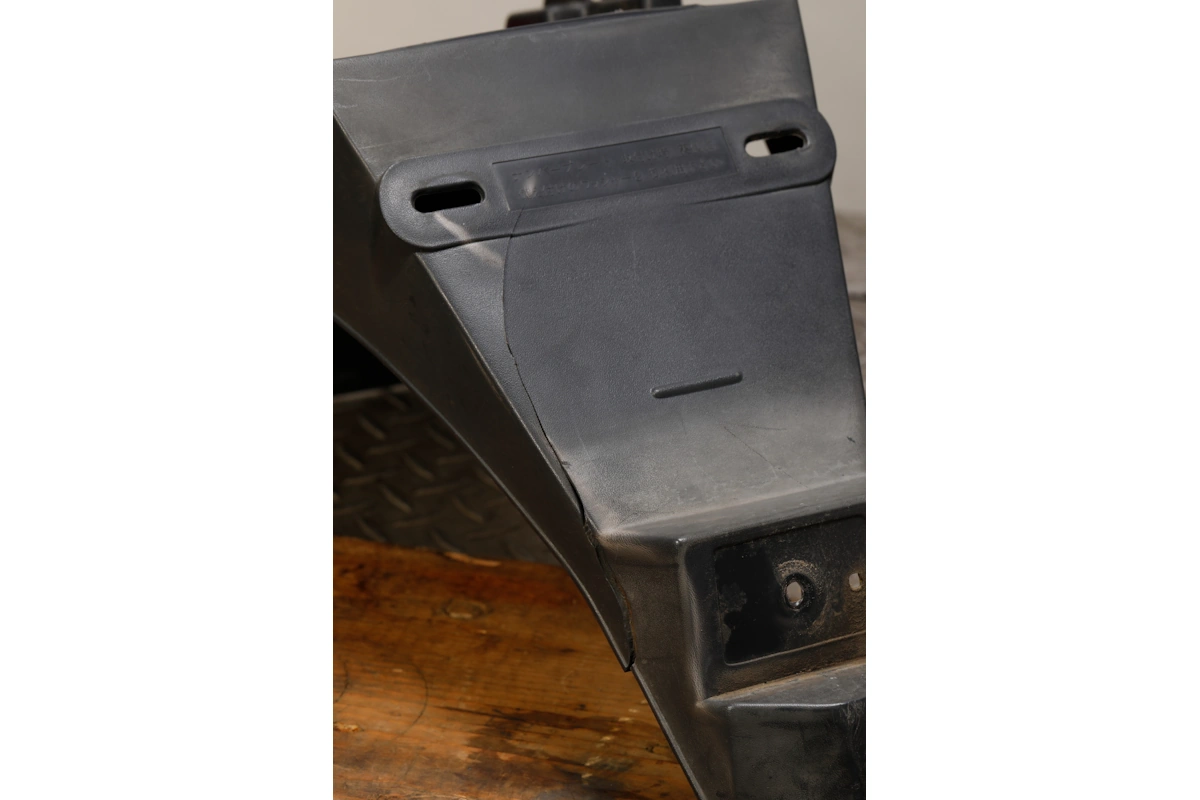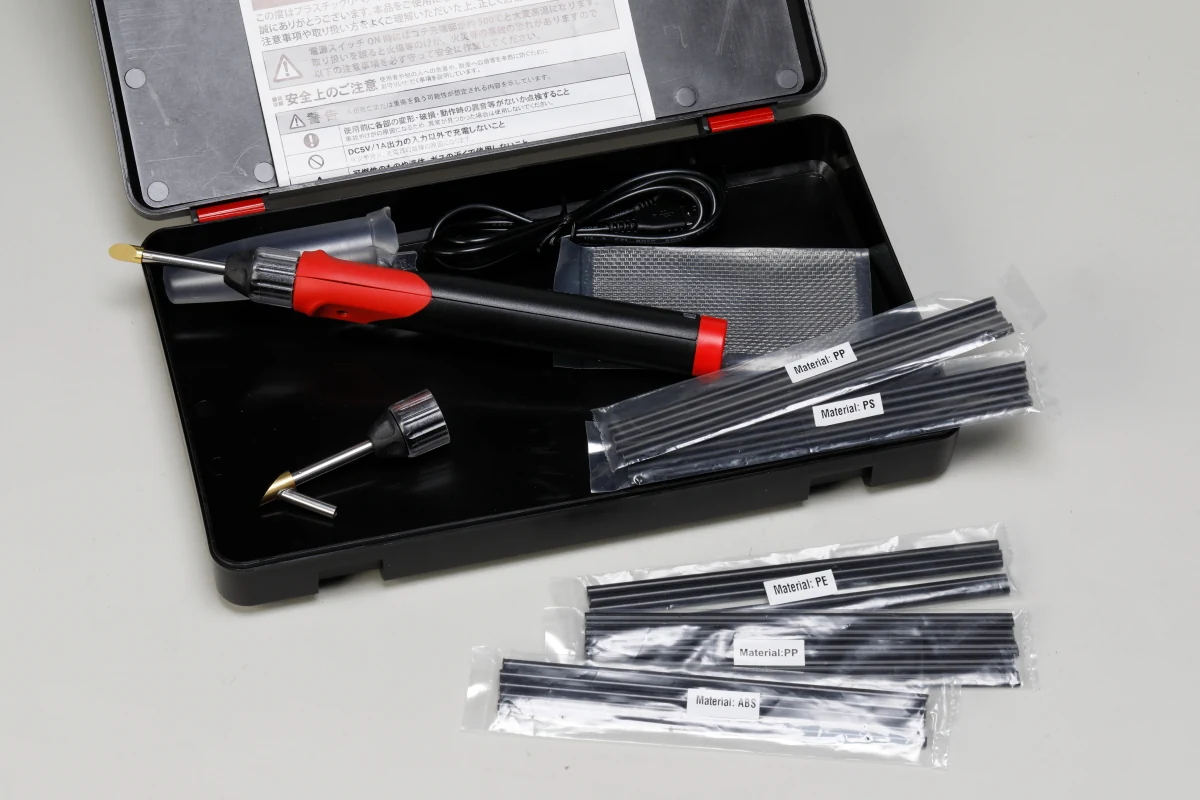Resin parts such as ABS and PP, which are lightweight and can be used in complex shapes, are popular for side covers, front and rear fenders, and most exterior parts on scooters. They are often replaced when cracked or chipped due to a fall or other accident, but depending on the degree of damage, there may be cases where they can be repaired.
In such cases, repair kits that use heat to melt the material as it is joined are useful.
- Some resins are hard to glue on.
- ABS resin can be bonded with organic solvents
- Welding repair for all thermoplastic resins
Some resins are hard to glue on.


Rear fenders that have cracked due to significant force applied during storage, rather than from tipping over.
Fenders and side covers can be damaged by being pushed against neighboring bikes in public bicycle parking areas with narrow gaps between them.
Resin products are all around us in our daily lives, and many of them are also used in motorcycles. It is not unusual for the majority of exterior parts, such as front and rear fenders, cowls, side covers, and tank covers, to be made of resin. In consideration of recycling after use, the names of materials such as ABS, PP, PE, and PC are often indicated on the back of plastic parts. These abbreviations provide clues as to how to repair the parts in case of breakage or trouble. If a plastic part is cracked or chipped due to a fall or carelessness, it will have to be replaced if the damage is severe, but if it is only a crack or partial loss, it may be repairable.
In the case of out-of-print vehicles, for which replacement parts are difficult to obtain, it may be necessary to reuse the parts even if they are in poor condition. Adhesives are the most common materials that come to mind for joining cracked resins, but some types of resins are difficult to adhere to. They are called “hard-to-adhere resins,” and PP (polypropylene) is one that is widely used as a key component of motorcycle parts. PP, which has excellent resistance to solvents and gasoline and is highly flexible, is often used for unpainted parts such as rear fenders and scooter steps, but it is so difficult for adhesives to work that special primers are available.
ABS resin can be bonded with organic solvents
On the other hand, ABS (acrylonitrile butadiene styrene), which is often used for exterior parts that are painted and used such as cowls, fenders (painted type), side covers, and seat cowls, can be melted with a solvent for adhesion. Acetone, which is readily available in the paint and FRP sections of home centers as an organic solvent, can dissolve ABS and may be poured over a perfectly matched fractured surface for a strong bond. If you put a piece of ABS in a glass bottle and pour acetone, the ABS will dissolve into a sludgy paste, which can even be applied like putty.
Welding repair for all thermoplastic resins


Plastic repair kit sold at Straight, a nationwide tool store. It is a rechargeable type heated by a lithium-ion battery and can be used to replace tips of different shapes and sectioning. PP, PE, and ABS welding rods and stainless steel mesh are also included.
Some resins used in motorcycle parts are easy to attach with adhesives, while others are not, and heat weld repair can be used for both. ABS and PP are thermoplastic resins, which soften and liquefy when heated. Once liquid, they become solid when the temperature is lowered.
As a side note, thermosetting resins have properties that are in contrast to thermoplastics.
Typical examples are polyester resins and epoxy resins used in FRP products, which do not deform into a squishy shape when heated. Welding repair is a repair method that takes advantage of the fact that ABS and PP are thermoplastic resins that can be melted by heat.
In the same way that welding aluminum or steel is stronger and harder to peel than gluing or welding, weld repair of resin that melts the repaired part is stronger and more durable than gluing.